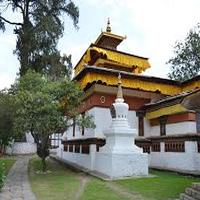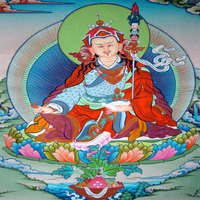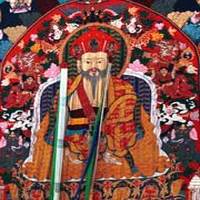
History Of Bhutan
The discovery of early stone tools in Bhutan confirm human inhabitation in Bhutan as early as 2000 B.C. However there has not been further details on the same due to lack of official records.
Bhutan was originally known by different names. A few of them were Lho Jong (The Southern Valley), Lho Mon Kha Zhi (The Southern Mon Country of Four Approaches), Lho Jong Men Jong (The Southern Valleys of medicinal Herbs) or Lho Mon Tseden Jong (The Southern Mon Country of Sandalwood).

Bonism was the dominant religion in Bhutan until the introduction of Buddhism with the construction of the Buddhist temples in 7th century by The Tibetan King Srongtsen Gampo.
King Srongtsen Gampo ordered construction of 108 monasteries throughout Himalayan countries. Among these 108 monasteries, two monasteries were built in Bhutan which are Kichhu Lhakhang in Paro and Jambay Lhakhang in Bumthang.

Buddhism was further strengthened by the arrival of Guru Rinpoche in 747 AD. Buddhism flourished in Bhutan in the 8th century after the arrival of Guru Rinpochhe. According to the legend related to Taktsang Monastery, it is believed that Guru Rinpoche flew to this location from Tibet on the back of a tigress from Khenpajong.
An alternative legend holds that a former wife of an emperor, known as Yeshe Tsogyal, willingly became a disciple of Guru Rinpoche in Tibet. She transformed herself into a tigress and carried the Guru on her back from Tibet to the present location of the Taktsang Monastery in Bhutan. In one of the caves here, the Guru meditated and emerged in eight incarnated forms and the place became holy. Subsequently, the place came to be known as the "Tiger's Nest"
Sometimes in the 17th century, with the arrival of the Drukpa Kayugpa Sect from Tibet and its dominant control over the Western parts, the country came to be known as the Druk Yul or the Land of the Drukpas.

In the year 1616, Zhabdrung Ngawang Namgyal came to Bhutan. Zhabdrung Ngawang Namgyal, due to his religious and political significance and abilities gained a lot of respect and position among the people and he unified the country with the establishment of the Chhoesi System of Government. The system functioned well during his time. He is also credited to have ordered the construction of Dzongs throughout Bhutan with the most famous being the Punakha Dzong. However the system slowly started to fail after his death and again petty rulers started to fight for power and land.
The fights between the local rulers continued until the Trongsa Penlop Ugyen Wangchuk became powerful and was able to gain control. In the year 1907 the people and the local leaders crowned Sir Ugyen Wangchuck as the first hereditary King of Bhutan and so the Wangchuck dynasty continued.
In the year 2008, under the command of the fourth King, His Majesty Jigme Singye Wangchuck, the Constitution of Bhutan was enacted and the government was converted into a multi-party democratic constitutional monarchy and Bhutan had its first Poll day in the same year.
Jigme Khesar Namgyel Wangchuck is the fifth and current reigning King of Bhutan. After his father, the King Jigme Singye Wangchuck abdicated the throne in his favour, he was enthroned on 9th December 2006. A public coronation ceremony was held on 1st November 2008, an auspicious year that marked 100 years of monarchy in Bhutan.

